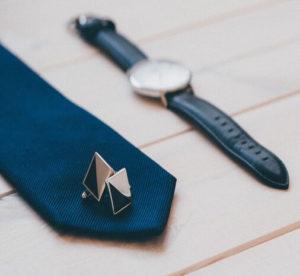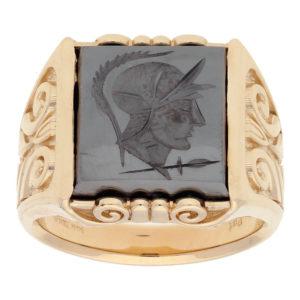Growth Opportunities Abound For Men’s Jewelry
 Men’s jewelry is a key category with immense growth opportunities to elevate its sales and visibility to that of men’s watches, guys’ No. 1 accessory. Cultural norms are blurring the line separating gender roles, as reflected in the jewelry sector with men today exploring new consumer realities, finds The Futurist, publisher of TrendVision.
Men’s jewelry is a key category with immense growth opportunities to elevate its sales and visibility to that of men’s watches, guys’ No. 1 accessory. Cultural norms are blurring the line separating gender roles, as reflected in the jewelry sector with men today exploring new consumer realities, finds The Futurist, publisher of TrendVision.
“Images of a hyper-masculine man in business clothing not wearing any jewelry are fading away,” says Paola De Luca, founder and creative director for The Futurist. “Men have become more image-conscious, especially Millennials. A survey conducted by Noise/The Intelligence Group, a youth focused marketing agency in New York, shows that 34 percent of men polled are willing to pay premium prices for a luxury accessory.”
Modern men are embracing the fine jewelry sector and are ready to spend money in it – just as the men’s market has seen growth in other categories like grooming products. To meet the increased demand, stores are expanding their men’s section to include more jewelry. De Luca cites Mr. Porter, the male counterpart of the retailer Net-a-Porter, offering men’s jewelry the past several years, initially selling entry price point pieces from fashion houses like Alexander McQueen and Bottega Veneta, then expanding to include fine jewelry.
A Sept. 11, 2018 article in The New York Times, titled “The New Appeal of Men’s Jewelry” attributes Instagram and Snapchat as having a lot to do with this growth of men’s style. The report says that young men in partciular are getting their style cues from social media posts. Guys do selfies, style posts showing and touting what they’re wearing. According to the market research firm NPD Group, Millennials in the U.S.are driving men’s jewelry sales, generating half of the growth, followed by Gen Z and Gen X.
Global sales of men’s luxury fine jewelry reached $5.3 billion in 2017, up from $4.3 billion in 2012, an increase of 22 percent, reports the market research company Euromonitor International. The Times points out that it may not seem like much when compared with the $31.9 billion sales in the women’s sector in 2017, but men’s sales growth has been steady. It hails that men all over the world are now viewing jewelry “as part of an outfit”.
Top Accessories
With watches their No. 1 accessory, it’s not a stretch to imagine that bracelets are appealing to men as well. Scott Rauch, president of SHR Jewelry Group, New York, manufacturer of men’s jewelry, including the Esquire brand, says men really have taken to the stacking trend when it comes to bracelets, mixing metals and materials like leather and beads. He says it’s especially helpful to market and merchandise in a way that inspires men with ideas and confidence to explore different combinations.
Men are especially drawn to darker colors, patterns and rugged textures, finds Cora Lee Colaizzi, director of marketing and catalogs and senior merchandiser Quality Gold, Fairfield Ohio. She cites black agate, lava rock, and other naturally occurring materials like wood as favorites in beads and inlay designs.
 It’s an exciting time for the men’s jewelry category with more options to choose from on the market. Cynthia Speight, marketing manager for IB Goodman, Newport, Kentucky says men, especially Millennials desire pieces they can wear to express their personality and style. That’s why, she says, signet rings remain one of the most popular jewelry styles for men (and women, too).
It’s an exciting time for the men’s jewelry category with more options to choose from on the market. Cynthia Speight, marketing manager for IB Goodman, Newport, Kentucky says men, especially Millennials desire pieces they can wear to express their personality and style. That’s why, she says, signet rings remain one of the most popular jewelry styles for men (and women, too).
“A true mark of individual style, the iconic signet ring is the definitive ring to create your personal legacy,” Speight declares. “Dating back to ancient times, the signet ring is a tool used by aristocracy to create a signature, engraved with a monogram, symbol or family crest pressed into wax for a personal seal. It’s a classic style that’s great for story telling.”







